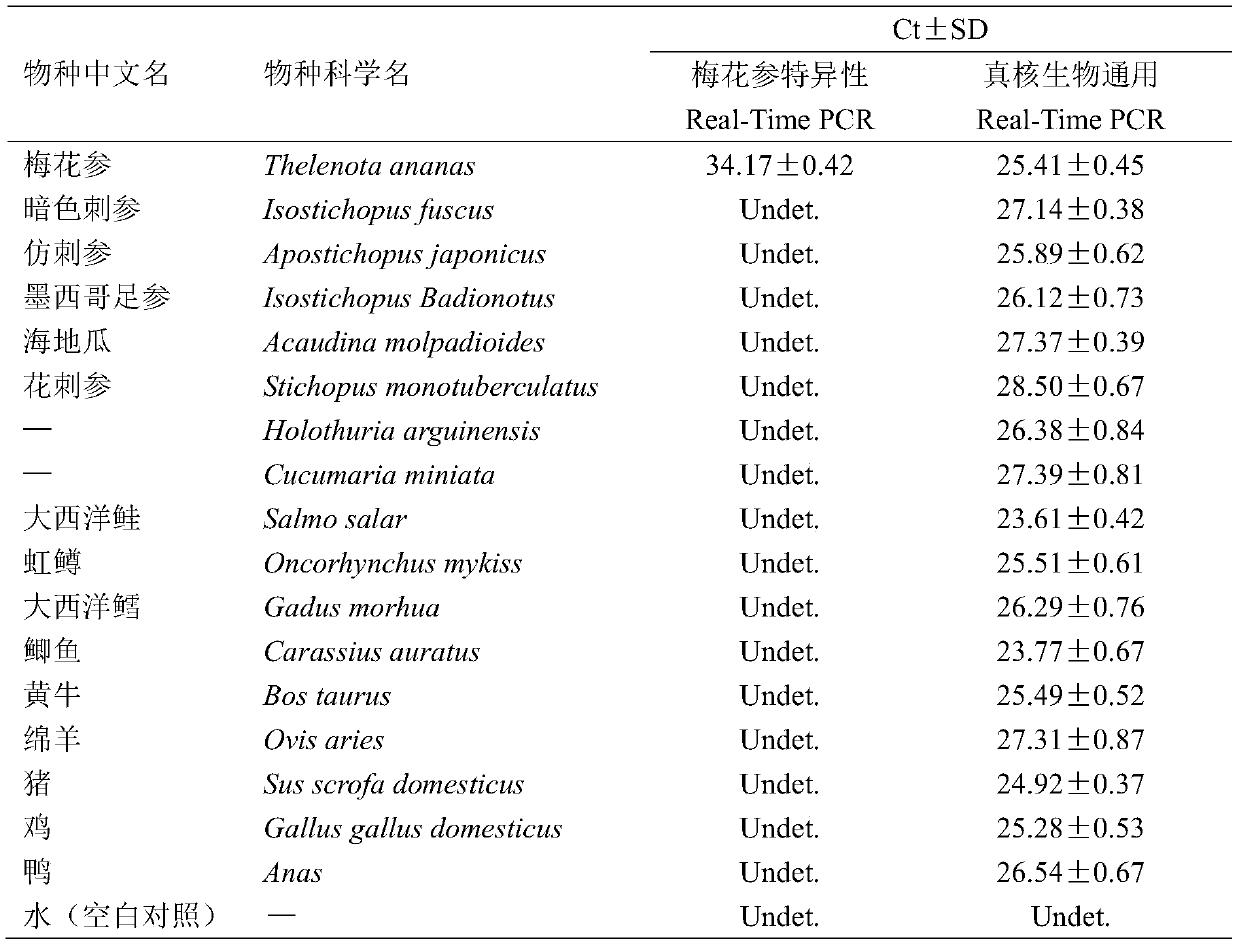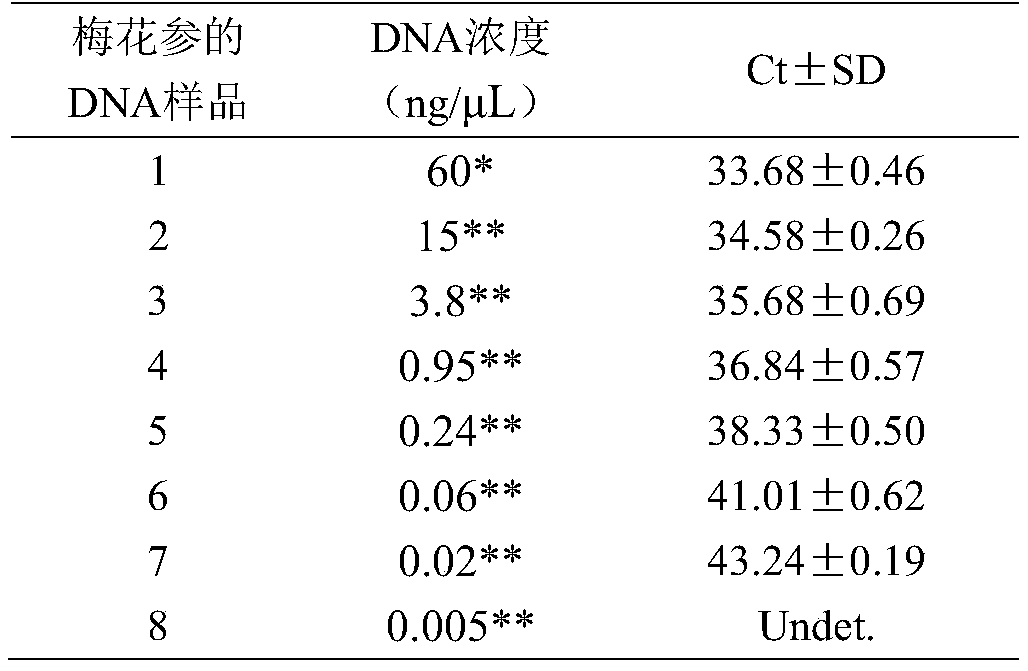Fluorescence PCR detection method of Thelenota ananas, and primers and probe for detecting Thelenota ananas
A plum flower ginseng and probe technology, applied in biochemical equipment and methods, microbiological determination/inspection, DNA/RNA fragments, etc., to meet the requirements of rapid screening and identification, high sensitivity and specificity, and simple operation Effect
- Summary
- Abstract
- Description
- Claims
- Application Information
AI Technical Summary
Problems solved by technology
Method used
Image
Examples
Embodiment 1
[0035] Implementation Example 1: Design of Primers and Probes
[0036] Based on the highly species-specific mitochondrial COI gene sequence (GenBank: AF486424.1), a pair of specific amplification primers TA-F and TA-R were screened out, and a set was set in the amplification region of the primer pair. A specific probe TA-P, and a fluorescent signal is labeled on the probe to realize real-time fluorescence detection. The specific amplification primers and probe sequences of the plum blossom ginseng are respectively:
[0037] TA-F:GCTCAACCAGGATCCCTTCT
[0038] TA-R: CCGGCTCCTCTTTCTACTCC
[0039] TA-P: FAM-CCTTCCCCCGAATGAACAAC-Eclipse.
[0040] And according to GB / T25165-2010, prepare primers 18SrRNA-F, 18SrRNA-R and probe 18SrRNA-P for detecting eukaryotes, which can be used as internal reference primers and probes to test the quality of the extracted DNA. The internal reference primer and probe sequences are respectively:
[0041] 18SrRNA-F:CCTGAGAAACGGCTACCAT
[0042] 18...
Embodiment 2
[0044] Implementation Example 2: Sample DNA Extraction
[0045] Take 2 g of plum flower ginseng tissue after foaming in cold water for 12 h, grind it thoroughly, use a DNA extraction kit (DNeasynericon Food Kit, QIAGEN), and perform DNA extraction according to the instructions, and dissolve the extracted DNA in 30 μL-100 μL water (can be Adjust as needed for concentration). In the extraction process, sea cucumbers of other species that do not contain plum ginseng components were set as negative controls.
Embodiment 3
[0046] Implementation Example 3: Detection of samples by real-time fluorescent PCR, judgment of results, and preparation of detection kits
[0047] Real-time fluorescent PCR amplification reaction. The primer and probe sequences are shown in Table 1. The real-time fluorescent PCR reaction system is as follows: 10 μL Premix Ex Taq (Takara), 0.4 μL of upstream primer (10 pmol / μL), 0.4 μL of downstream primer (10 pmol / μL), probe (10 pmol / μL) μL) 0.4 μL, take 2 μL of the DNA solution extracted above, and make up the volume to 20 μL with water. Real-time fluorescent PCR instrument lightcycle 480 (Roche) was used for the reaction, and the reaction program was (1) 95°C, 10sec; (2) 95°C, 5sec; 60°C, 23sec; 50 cycles.
[0048]In addition to the samples in the detection process, a positive control (that is, a DNA sample of plum blossom ginseng, and a sample with a DNA concentration ≥ 60 ng / μL should be set as a positive control as much as possible to meet the Ct value ≤ 35, so that the...
PUM
 Login to View More
Login to View More Abstract
Description
Claims
Application Information
 Login to View More
Login to View More - R&D
- Intellectual Property
- Life Sciences
- Materials
- Tech Scout
- Unparalleled Data Quality
- Higher Quality Content
- 60% Fewer Hallucinations
Browse by: Latest US Patents, China's latest patents, Technical Efficacy Thesaurus, Application Domain, Technology Topic, Popular Technical Reports.
© 2025 PatSnap. All rights reserved.Legal|Privacy policy|Modern Slavery Act Transparency Statement|Sitemap|About US| Contact US: help@patsnap.com



